Past lectures
 |
Thursday 20th January 2022 at Phyllis Court
10.45 repeated at 2.15pmLecturer: Angela FindlayArt Behind Bars: The Role of the Arts in Breaking the Cycle of Crime, Prison and Reoffending Years of working as an artist within the Criminal Justice System in England and Germany have given Angela unique insights into the destructive and costly cycle of crime, prisons and re-offending.
 (Please click on the blue print above to continue reading)
|
 |
Thursday 18th November 2021 at Phyllis Court
10.45am and 2.15pm Lecturer: Anne SebbaThe Story of the Cook Sisters and How They Used Opera to Save Lives 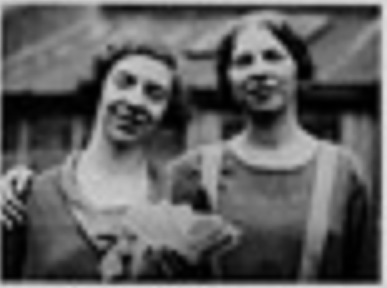 Ida and Louise Cook were destined never to marry after decimation of the men of their generation in World War One. When Ida became a successful Mills and Boon novelist they used their earnings to indulge their love of opera, travelling all over the world but especially to Salzburg. Familiarity with Austria enabled these two eccentric opera loving sisters to undertake dangerous undercover missions in the 1930s rescuing Jewish musicians and others from the Nazis. Ida and Louise Cook were destined never to marry after decimation of the men of their generation in World War One. When Ida became a successful Mills and Boon novelist they used their earnings to indulge their love of opera, travelling all over the world but especially to Salzburg. Familiarity with Austria enabled these two eccentric opera loving sisters to undertake dangerous undercover missions in the 1930s rescuing Jewish musicians and others from the Nazis. (Please click on the blue print above to continue reading)
|
 |
Venue: Town Hall (please note venue)
Wednesday 3rd November 2021 10.30am AGM followed by lecture
Morning lecture only, members onlyLecturer: Rosamund BartlettPsychology of a City: The Architecture of St Petersburg St. Petersburg’s dignity and grandeur is everywhere apparent. Peter the Great had before him a vast tabula rasa when planning his future capital at the beginning of the 18th century. The city he built was truly sumptuous – but it came at a price. This lecture tells the story of the buildings of St. Petersburg, but also the life that went on inside the buildings, focussing particularly on the city’s writers, musicians and artists, for whom St. Petersburg definitely had a personality – sometimes enigmatic, sometimes tragic - which they immortalised in their paintings, music and literary works.
(Please click on the blue print above to continue reading)
|
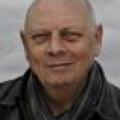 |
Thursday 21st October 2021 at Phyllis Court
10.45am and 2.15pm Lecturer: Colin PinkGustav Klimt and Fin de Siècle Vienna Society  Turn of the century Vienna was a melting pot of new ideas in science (Hertz and Boltzmann);
philosophy (Ludwig Wittgenstein);
psychoanalysis (Sigmund Freud);
modernist architecture (Otto Wagner and Adolf Loos);
twelve tone music (Arnold Schoenberg, Alban Berg and Anton Webern);
modernist literature (Karl Kraus, Robert Musil and Arthur Schnitzler);
and in art (Klimt, Kokoschka and Schiele).
Gustav Klimt led the Secession movement, which broke free from nineteenth century academic art, to create a highly decorative and potent form of imagery, drawing inspiration from art nouveau, symbolism, Byzantine and Mycenaean art. Klimt created a highly decorative and sensual visualization that explored the power of sex in the age of Freud. We will examine the ramifications of Klimt’s sexually charged images in the context of Viennese art and society.
(Please click on the blue print above to continue reading)
|
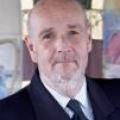 |
Thursday 16th September 2021 at 10.45am and 2.15pm live at Phyllis CourtLecturer: Matthew WilliamsGhastly Good Taste - The Highs and Lows of British Interior Design 1880 - 1980 This lecture looks at the enormous changes in our homes over a hundred year period, encompassing aspects of household taste from Victorian clutter to the psychedelic ‘throw away’ furnishings of the 1970s. (Please click on the blue print above to continue reading) |
 |
Thursday 15th July 2021 online at 10.30am repeated at 2.30pm
Lecturer: Dr Geri ParlbyShock! Horror! Probe! The Art and Artifice of Fleet Street: A Newspaper Story in Pictures
|
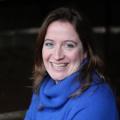 |
Thursday 17th June 2021 at 10.45am and 2.15pm or online t 10.30am if necessary.Lecturer: Pamela Campbell-JohnstonThe Art of 1935 Can a single year adequately encapsulate an artistic environment in British art history? This lecture, The Art of 1935, explores that year’s many aspects of decorative and fine art, demonstrating how these artistic forms reflected the period in a fitting and cohesive manner.
Set against the backdrop of the 1935 Silver Jubilee Celebrations of King George V and Queen Mary, audiences are transported back to this fabulous time and learn about this pivotal year. (Please click on the blue print above to continue reading.) |
 |
Thursday 20th May 2021 Online at 10.30am and 2.30pm Lecturer: Peter MedhurstThe Genius of Beethoven Lecture This lecture is affiliated to the Special Interest Day on Wednesday 9th June. Click here to go straight to that page.
Famously, every morning of his adult life, Beethoven measured out exactly 60 coffee beans for his breakfast. A man who is capable of such discipline over a cup of coffee can surely apply that exactness elsewhere in his life; and in Beethoven's case, it was applied to his compositions.
(Please click on the blue print above to continue reading) |
 |
Thursday 15th April 2021 Online at 10.30am and 2.30pm Lecturer: Jo Walton'So! They Do Cook After All! Ravilious, Bawden and the Great Bardfield Artists
In 1932 the artist Edward Bawden and his wife Charlotte moved into Brick House in the Essex village of Great Bardfield, initially sharing the house with another artistic couple, Eric Ravilious and Tirzah Garwood.
(Please click on the blue print above to continue reading) |
 |
Thursday 18th March 2021 Online at 10.30am and 2.30pmLecturer: Fenella BazinThe Bayeux Tapestry Although the images of the Bayeux Tapestry are so familiar, the stories behind the work are much less known. The account of the Battle of Hastings is only a small part of this extraordinary work.
(Please click on the blue print above to continue reading) |
 |
Thursday 18th February 2021 online at 10.30am and repeated at 2.30pm Lecturer: Mark CottleA Photographic Odyssey: Shackleton's Endurance Expedition Captured on Camera
During Ernest Shackleton's third Antarctic expedition in 1914, his ship, the Endurance, was trapped and eventually crushed in the pack ice. After camping for five months on the ice, Shackleton's men rowed to the remote Elephant Island. From there, Shackleton sailed for help to South Georgia over 800 miles away. Over three months later he returned to rescue the crew of the Endurance.
Elephant Island South Georgia photographed by Frank Hurley (Please click on the blue print above to continue reading) |
 |
Thursday 21st January 2021 Online at 10.30am and 2.30pmLecturer: Steven DesmondThe Odd Couple: The Gardens of Edwin Lutyens and Gertrude Jekyll
Hestercombe House and Gardens, Somerset, designed by Edward Lutyens, created by Gertrude Jekyll
(Please click on the blue print above to continue reading) |
 |
Thursday 17th December 2020 Online at 10.30am and 2.30pmLecturer: David WrightA Brief History of Wine This lecture should be very enjoyable! (Please click on the blue print above to continue reading) |
 |
Thursday 19th November 2020 Online at 10.30am and 2.30pmLecturer: Amy OrrockBruegel's Winter Scenes One of the first artists to paint snow, Pieter Bruegel the Elder (c1525-1569) is known today for wintery masterpieces, such as The Hunters in the Snow, The Census at Bethlehem and The Massacre of the Innocents. (Please click on the blue print above to continue reading) |
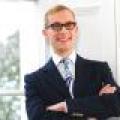 |
AGM 10.30am and Lecture 11.15am all online, Wednesday 4th November 2020Lecturer: Mark HillUndressing Antiques “Antiques. I don’t understand them and they’re beyond my budget. They’re not for me.” A persuasive introduction to buying antiques and integrating and using them in today’s homes. The state of the antiques market and the different meanings of the word value are considered, and we take a look at what current and future generations of collectors are buying, why they are buying it and how they are displaying it. (Please click on the blue print above to continue reading) |
 |
Thursday 15th October 2020 Online at 10.30amLecturer: Stella Grace LyonsAll the Lonely People: The Work of American Realist Edward Hopper Hopper was a painter of loneliness and melancholy; from solitary figures in offices, motel rooms and diners, to deserted towns.
Office in a Small City Western Motel He portrayed a changing America and the isolation of the individual in the modern city. His works are visually stunning; characterised by striking colours, cinematic and cropped compositions which heighten tension. (Please click on the blue print above to continue reading) |
 |
Thursday 15th October 2020 Online at 2.30pmLecturer: Ian SwankieThe World’s Most Expensive Art - Where Leonardo Meets Picasso In the last few years the top end of the art market has flourished beyond all expectation, and collectors have been prepared to pay astonishing amounts to own a modern masterpiece.
Amedeo Modigliani Nu couché (sur le côté gauche) This lecture is about the works that have sold for over $100 million and is an excuse to examine some beautiful and varied art. These works would not achieve such sky-high prices if they were no good. (Please click on the blue print above to continue reading) |
 |
Thursday 17th September 2020Lecturer: Shirley SmithMan the Measure of All Things: The rise of portraiture in Renaissance Italy We cannot imagine a world where the only faces we recognize are those with whom we have physically come into contact. Yet that was the situation in Medieval Europe when, with power vested in the Church, the glorification of man was frowned upon. (Please click on the blue print above to continue reading) |
 |
Thursday 18th June 2020Lecturer: Pamela Campbell-JohnstonThe Art of 1935 Through this lecture audiences are transported back to this fabulous time and learn about this pivotal year. From the Silver Jubilee celebrations for King George V and Queen Mary; the work of the celebrated portrait photographer, Cecil Beaton; to magazine and poster design and the fashions of the time. (Please click on the blue priint above to continue reading) |
 |
Thursday 21st May 2020Lecturer: Steven DesmondThe Odd Couple: The Gardens of Edwin Lutyens and Gertrude Jekyll In the spring of 1889 the young Edwin Lutyens, later to become the most famous British architect of the 20th century, met the artist-gardener-craftswoman Gertrude Jekyll for the first time at an afternoon tea party in rural Surrey. She was a well-known eccentric and a generation older than the young man. (Please click on the blue print above to continue reading)
|








 In the spring of 1889 the young Edwin Lutyens, later to become the most famous British a
In the spring of 1889 the young Edwin Lutyens, later to become the most famous British a rchitect of the 20th century, met the artist-gardener-craftswoman Gertrude Jekyll for the first time at an afternoon tea party in rural Surrey. She was a well-known eccentric, of whom her parents had despaired, and a generation older than the young man who communicated with the world through drawings and elaborate jokes. Lutyens found in the daunting Miss Jekyll someone who empathised with his big ideas regarding design, detailing and distinctiveness. She opened social doors to him, and he brought her experiments in garden making onto the national stage.
rchitect of the 20th century, met the artist-gardener-craftswoman Gertrude Jekyll for the first time at an afternoon tea party in rural Surrey. She was a well-known eccentric, of whom her parents had despaired, and a generation older than the young man who communicated with the world through drawings and elaborate jokes. Lutyens found in the daunting Miss Jekyll someone who empathised with his big ideas regarding design, detailing and distinctiveness. She opened social doors to him, and he brought her experiments in garden making onto the national stage. 
